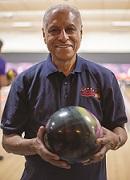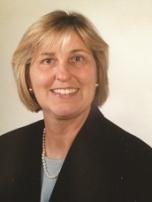

In many ways, senior athletes are like those of any age. They want a good experience at an event, and they want to perform their best. As the staff in charge of the event, you want to make it possible for both of those things to happen.
Planning effective sports events for seniors means looking at the whole picture. Start with your goal (the athletes enjoying themselves and performing well) and move backwards from there. At the National Senior Games Association, we have come to realize there are two distinct types of athletes who attend. One type is the dedicated competitor. That person is in it for a medal, or at the very least, a personal best or an improvement upon their last performance along with the socializing with other athletes afterwards.

Knowing your participants and making everyone happy means creating an environment that allows them to do what they want: compete at a high level or just have an enjoyable time. And in some cases, that means tinkering with the format of the event in order to keep people happy. For example, the 2017 National Senior Games Presented by Humana (our 30th Anniversary event) will be held June 2-15 in Birmingham, Alabama. We already know we can expect some hot, sticky weather that time of year. For vigorous outdoor events such as our 5K, we’ll start earlier, perhaps 7:30 a.m. rather than our usual 8 a.m., just to make sure people avoid the worst of the heat. (Similarly, if we have an outdoor event where different age groups are competing at different times, we’ll give the older competitors the earlier start times.)
The other part of knowing your competitors is understanding the age group. Individuals are eligible to compete in the National Senior Games beginning at age 50. That means in many cases, you’ll have a demographic that is still working. To help people not have to take off as much time from work, we’ve tried to put the age-group competitions for this demographic on the weekends, or as close to them as possible.

Every event, no matter what age the participants are, needs a crisis plan. A lot has been written about establishing an effective plan in case things go wrong, either on a small scale or a large one. Have a written, well-thought-out plan for action that you share with your staff and volunteers, illustrating emergency response, contacts and more. This is not something you can leave to chance or simply assume it won’t happen. It is an essential part of being an event director, and you need to address it. If you’re lucky, nobody will ever know the plan exists – but if something happens, you’ll be glad everyone was trained and ready.
Another part of our success is keeping an eye on participation trends. We recently added another age division to our basketball competition: 80 and up. That’s a sport that is really growing. In 2011, we added pickleball as an exhibition sport. It was well attended in Cleveland in 2013, so it was added to our 18 other sports. We had approximately 360 players, which is great. The next cycle, in Minneapolis in 2015, we had over 600 players. We see no reason why it won’t keep growing.

Many women have told us they were in high school and college before the advent of Title IX, and simply did not have the opportunities to participate in athletics. Today, there are leagues, clubs, teams and associations they can be involved in. Now they can participate and feel good about something they love to do. We like to think the Senior Games are another way they can enjoy those sports in a competitive and social forum.
A little earlier, I talked about the two types of athlete who come to the National Senior Games. When we look for a city to host our Games, we are seeking something to satisfy both those stakeholder groups. Obviously, the first thing we look for is competition venues: we need the right venues with the capacity to host the number of athletes we have historically had in each sport (and in the cases of sports like pickleball, with the capacity to host them as they will grow.) We know our Games are attractive to cities not just because senior athletes are a positive influence, but also because of what they bring to a destination. In Cleveland, for example, there was $36 million in direct economic impact as a result of the Senior Games. Our records indicate that each athlete travels with an average of 2.5 people, and our Games generally draw between 10,000 and 12,000 athletes.
We like our venues to be close to our Village, which is basically the hub of all activity. We generally use convention centers as our hubs because they’re have multiple areas for sports and other activities. The Village includes information and registration desks, a cyber café, our expo, exhibit tables and more. There’s always something going on in this area, and it serves as a great place to meet others, unwind or simply learn more about the Games and about the city.

Something else we look for is tourism opportunities. Many of our athletes will attend because they like coming to cities they have never visited before. Cleveland, for example, had interesting sights, fun museums and a great orchestra. Birmingham, where we’ll be in 2017, has the Freedom Trail, several museums and the Robert Trent Jones Golf Trail winding throughout Alabama, which is on most golfers’ bucket lists. We know people will want to explore and visit with their friends in addition to the competition.
The opportunity to socialize is incredibly important for our participants. We’ll hear people say, ‘Well, I just got in and I’m from California, but I’m going to meet up with someone I met last time from Tennessee and we’re going to go out to dinner and catch up.’ To us, that’s what the Games are all about: creating a positive, healthy experience for people that delivers “Fitness, Fun and Fellowship.”

